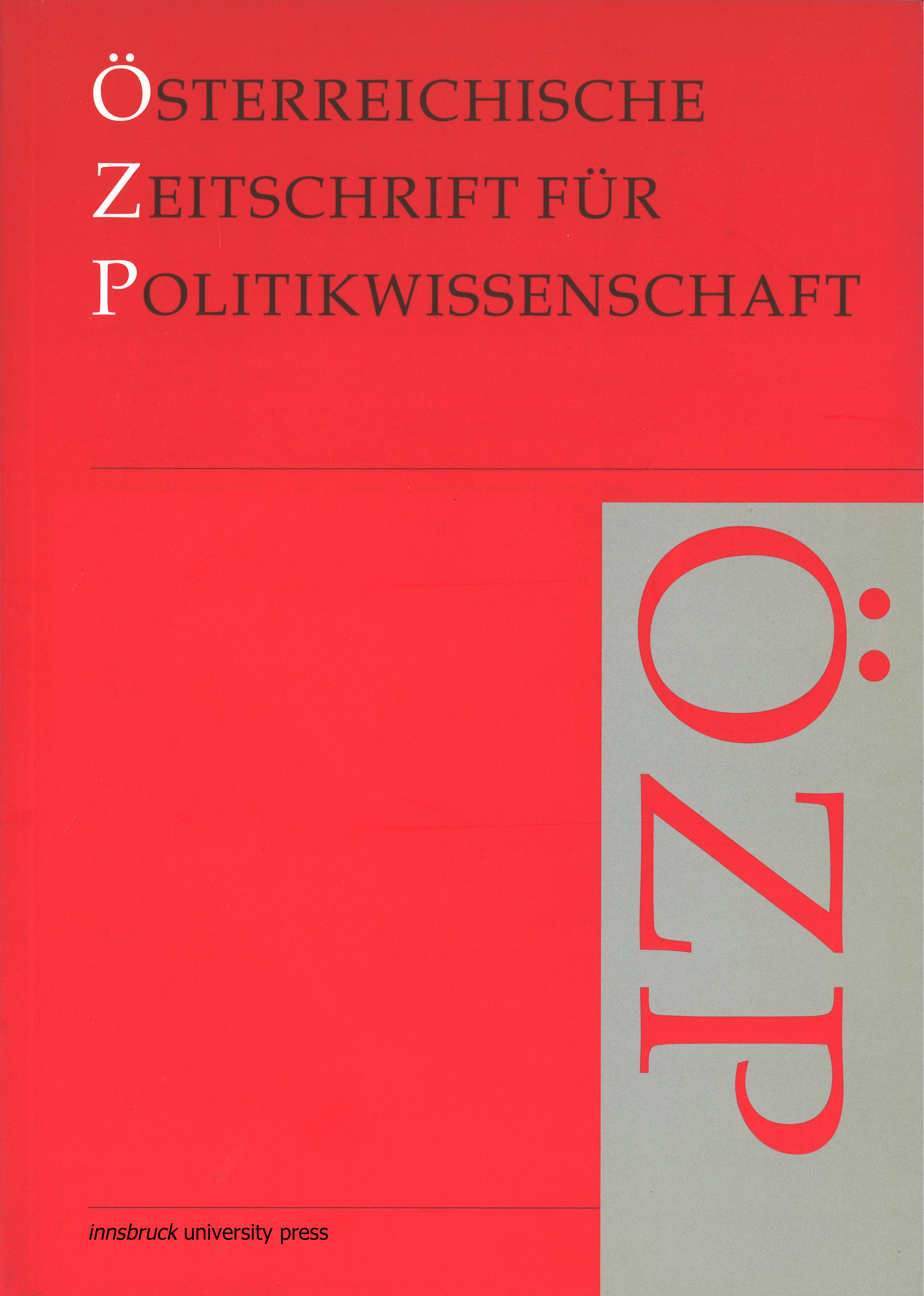Die Funktion der Nationalratsausschüsse im Prozess der Bundesgesetzgebung
DOI:
https://doi.org/10.15203/ozp.743.vol29iss2Abstract
Der Aufsatz beschreibt die Funktion der Nationalratsausschüsse im Prozess der österreichischen Bundesgesetzgebung. Deren eigenständige Handlungsspielräume werden einerseits durch die Tatsache beschränkt, dass parlamentarische Systeme ganz allgemein durch einen engen Handlungsverbund zwischen Regierung und Parlamentsmehrheit gekennzeichnet sind. Österreichische Spezifika ergeben sich neben der stark ausgeprägten Verbändestaatlichkeit vor allem aus der bisherigen Dominanz „großer Koalitionen” von SPÖ und ÖVP. Diese hatten zur Folge, dass viele Funktionen, die üblicherweise (so auch zwischen 1966 und 1983) von Parlamentsausschüssen erfüllt werden, seit 1987 eher von vorgelagerten Koalitionsgremien übernommen werden. Der Aufsatz verwendet daher einen thematisch breiten Zugang: Es werden sowohl die vorparlamentarischen als auch die parlamentarischen Stadien des Gesetzgebungsprozesses untersucht, und sowohl die Ausschüsse selbst als auch im speziellen die Rolle der Ausschussfraktionen der Parteien.Downloads
Issue
Section
License
The OZP is the authorized quarterly publication of the Österreichische Gesellschaft für Politikwissenschaft (ÖGPW, Austrian Political Science Association)
The author of an article (in case of multiple authors: the corresponding author, responsible for releasing this material on behalf of any and all co-authors) accepted to be published in the OZP hereby acknowledges the following Copyright Notice:
- The author retains the copyright to the article.
- It is the responsibility of the author, not of the OZP, to obtain permission to use any previously published and/or copyrighted material.
- Publication of a submitted text is dependent on positive results from the peer reviewing. In such a case, the OZP editors have the right to publish the text.
- In case of publication, the article will be assigned a DOI (digital object identifier) number.
- The author agrees to abide by an open access Creative Commons Attribution (CC BY nc) license. The license permits any user to download, print out, extract, reuse, archive, and distribute the article in any non-commercial way, so long as appropriate credit is given to the author and source of the work.
- The license ensures that the author’s article will be available as widely as possible and that the article can be included in any scientific archive. In order to facilitate distribution, the author agrees that the article, once published, will be submitted to various abstracting, indexing and archiving services as selected by the OZP.
- In addition, the author is encouraged to self-archive the article, once published, with reference to the place of the first publication.
- After the contribution appears in the OZP, it is still possible to publish it elsewhere with reference to the place of the first publication.
- The finished article, if published, will include a correspondence address (both postal and email) of the author.
- If written under the auspices of a grant from one or more funding agencies, such as FWF (Austrian Science Fund), ERC (European Research Council), and Horizon 2020 (EU Framework Programme), an article accepted for publication has to be deposited in an Open Access archive. The OZP’s archiving policy is compliant with these provisions. (In case the article derives on funding from a different source, the author is responsible to check compliance of provisions.)




